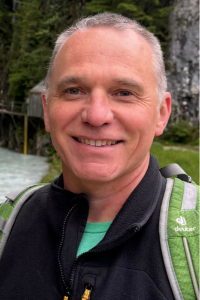 |
Brian SpiesmanAssistant Professor Office: 235 Waters Hall |
Areas of specialization: Pollinator ecology, machine learning, ecological networks, quantitative ecology
Education
- B.S. (1999), Biology, Portland State University
- M.S. (2006), Wildlife Ecology and Conservation, University of Florida
- Ph.D. (2012), Biological Science, Florida State University
Research Interests
I study relationships between insects, plants, and the environment. My research focuses on how species are distributed in space and time, how networks of interactions help structure communities, and the consequences of those interactions for community function and stability. Pollinators, many of which are in decline, are essential for the function of many natural and managed habitats. It is therefore important to understand how pollinators respond to disturbances such as habitat loss and climate change, but also how they respond to conservation efforts aimed at preserving their biodiversity. I use a combination of large- and small-scale experiments, observational studies, and mathematical modeling to explore questions in basic and applied ecology.
Recent Publications:
Visit the lab website for the most updated list of publications
Rui, Y, RD Jackson, MF Cotrufo, GR Sanford, BJ Spiesman, L Deiss, SW Culman, C Liang, MD Ruark. 2022. Persistent soil carbon enhanced in Mollisols by well-managed grasslands but not annual grain or dairy forage cropping systems. PNAS 119:e2118931119.
Spiesman, BJ, C Gratton. RG Hatfield, WH Hsu, S Jepsen, B McCornack, K Patel, G Wang. 2021. Assessing the potential for deep learning and computer vision to identify bumble bee species from images. Scientific Reports 11:7580.
Spiesman, BJ, BG Iuliano, and C Gratton. 2020. Temporal resource continuity increases predator abundance in a metapopulation model: insights for conservation and biocontrol. Land 9:479.
Spiesman, BJ, A Bennett, R Isaacs, and C Gratton. 2019. Harvesting effects on wild bee communities in bioenergy grasslands depend on nesting guild. Ecological Applications 29:e01828.
Spiesman, BJ, AP Stapper, and BD Inouye. 2018. Patch size, isolation, and matrix effects on biodiversity and ecosystem functioning in a landscape microcosm. Ecosphere 9:e02173.
Spiesman, BJ, H Kummel, and RD Jackson. 2018. Carbon storage potential increases with increasing ratio of C4 to C3 grass cover and soil productivity in restored tallgrass prairies. Oecologia 186:565-576.
Spiesman, BJ, A Bennett, R Isaacs, and C Gratton. 2017. Bumble bee colony growth and reproduction depend on local flower dominance and natural habitat area in the surrounding landscape. Biological Conservation 206:217-223.
Spiesman, BJ and C Gratton. 2016. Flexible foraging shapes the topology of plant-pollinator interaction networks. Ecology 97:1431-1441 .
*Wenninger, A, TN Kim, BJ Spiesman, and C Gratton. 2016. Contrasting foraging patterns: testing resource-concentration and dilution effects with pollinators and seed predators. Insects 7:23.
Kim, TN, BJ Spiesman, AL Buchanan, A Hakes, S Halpern, BD Inouye, A Kilanowski, N Kortessis, DW McNutt, AC Merwin, and N Underwood. 2015. Selective removal of insect herbivores influences an old-field plant community. Plant Ecology 216:1029-1045.
Spiesman, BJ and BD Inouye. 2015. The consequences of multiple indirect pathways of interaction for species coexistence. Theoretical Ecology 8:225-232.
Bartrons, M, C Gratton, BJ Spiesman, MJ Vander Zanden. 2015. Taking the trophic bypass: Aquatic-terrestrial linkage reduces methylmercury in a terrestrial food web. Ecological Applications 25:151-159.
Spiesman, BJ and BD Inouye. 2013. Habitat loss alters the architecture of plant-pollinator interaction networks. Ecology 94:2688-2696.
Spiesman, BJ and GS Cumming. 2008. Communities in context: The influence of multiscale environmental variation on local ant community structure. Landscape Ecology 23:315-325 .
Cumming, GS and BJ Spiesman. 2006. Regional problems need integrated solutions: pest management and conservation biology in agroecosystems. Biological Conservation 131:533-543.